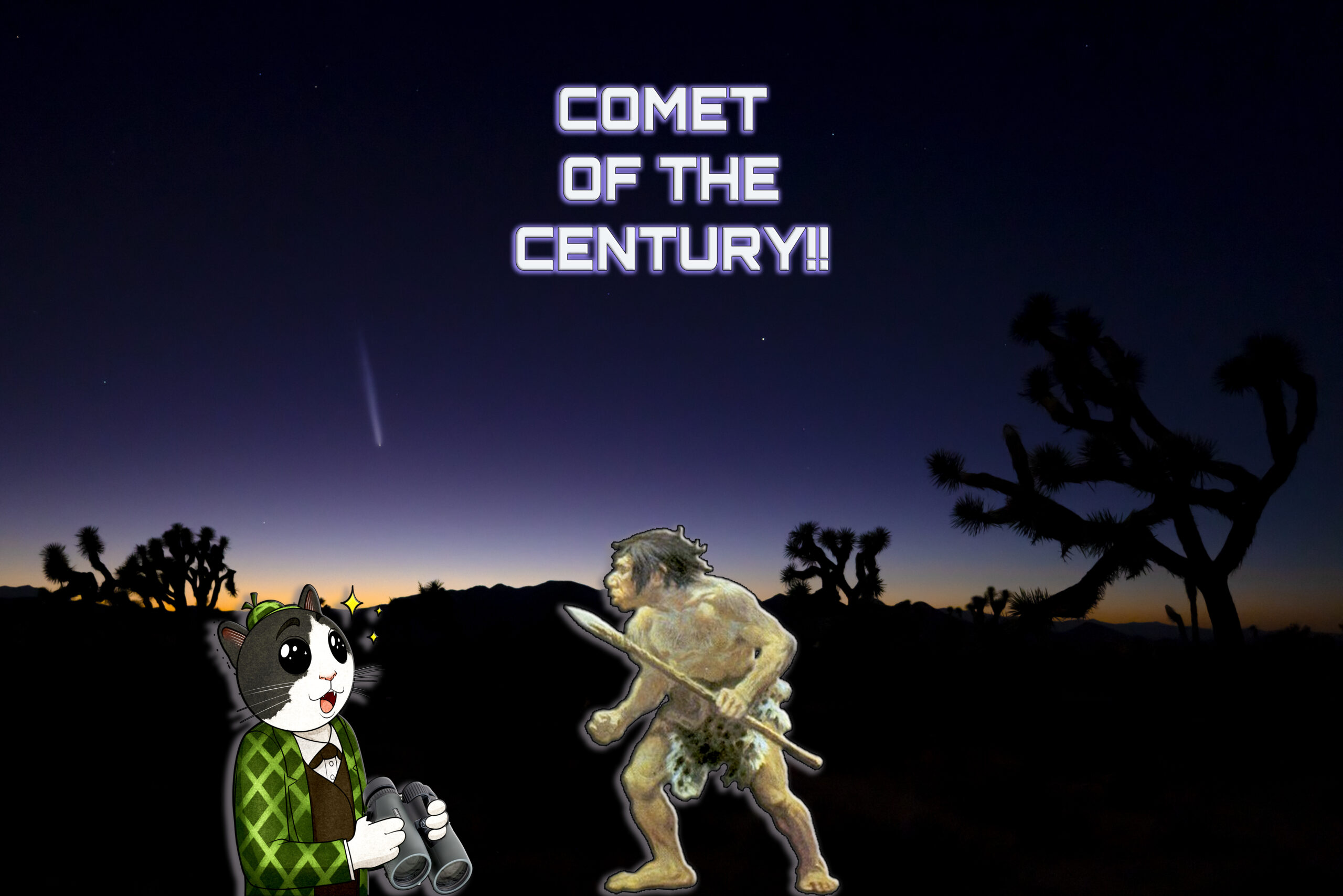This year, the astronomy world has been abuzz with talk of the Tsuchinshan–ATLAS comet, with many touting it as the “comet of the century”. But that’s not what drove me into the California desert with my Canon. What got my attention was the possibility that the last “creature” to see comet Tsuchinshan–ATLAS was a neanderthal. Getting to witness something our ancient ancestors possibly witnessed was irresistible. So off I went in search of the darkest skies I could find – which led me to Joshua Tree National Park.

I spent a couple of days scouring the park for the best views to the West, holding up my phone to align the sun with the planner in my PhotoPills app and framing some potential compositions. I’m sure hikers thought I was desperately searching for a cell signal.
The first night, I settled next to a small pullout on the side of the road near the Arch Rock trail. The wide open expanses with minimal obstructions seemed the most promising for guaranteed comet sightings. The sunset was magnificent but seemed to drag on for eternity.


Then, after about 30 minutes, a ghostly white tail emerged, and I gasped in bewilderment! Finally, after 80,000 years, I got my first glimpse of comet Tsuchinshan–ATLAS! This icy solar body flies towards us from the cosmographic boundaries of our home system in the Oort cloud. It’s a leftover from the formation of our solar system, as all comets are believed to be, and it was finally in my field of view.

This particular night, October 12, was the comet’s closest approach to us Earthlings – a mere 44 million miles away. Sadly, this “long-period comet” didn’t linger very long. After about 20 or 30 minutes, it vanished behind the distant mountains on the horizon.

The next morning, I discovered an even more dramatic comet-viewing point – the base of Ryan Mountain. There I found a field of tall old growth Joshua Trees, with their spiny fingers curling up towards the stars. This would surely make for some striking foreground subjects in my comet photos. I returned about an hour before sunset to scout my ideal viewing spot, set up my gear, and practice framing some shots.



I didn’t mind the wait. Desert sunsets are glorious transformations. As the sun falls, the fiery hues of the day give way to the deep violets of the night. The fury of the burning air shifts to gentle cool breezes and the desert’s nocturnal inhabitants begin to emerge. The pressing silence of the stifling daytime temperatures is interrupted by the fluttering of bat wings here and there which gives way to occasional sounds of scurrying in the sand by the bunnies and various desert rodents and reptiles.


Venus is the first to greet me as we descend into darkness, a bright beacon to my left. Next, the bright orange star Arcturus begins to glimmer faintly to my right and I have my markers! I shift my focus to a small area between them, where I expect the comet to appear. And I wait with even greater anticipation than I did the night before.

Tsuchinshan–ATLAS appeared much higher in the sky this time – almost exactly halfway between Venus and Arcturus.

Its tail seemed to grow longer and the comet was more generous with its time on this second night – giving me the opportunity to explore my creativity AND work on getting some closeup shots!



This carbon depleted, cyanide emitting behemoth has a head or “coma” about 130,000 miles in diameter, with a tail reaching out about 18 MILLION miles! Just what causes the tail you ask?? Well, as the giant ball of ice passes by the sun, it gets roasted and baked. This causes gasses to blast off of the comet, dragging dust particles behind it and giving us quite a show!

After about 45 minutes, my time with Tsuchinshan–ATLAS began to wind down as it slipped closer and closer towards the mountainous horizon. I put away my camera and admired the comet while I pondered what those archaic homo sapiens thought when they saw Tsuchinshan–ATLAS blazing through the sky. What were their lives like, what worries did they ruminate over while staring up at the cosmos? Did they ever stop to look up that long? Did they even delve into philosophical issues such as the meaning of life like me and so many others?

I stood in this vast ancient desert, staring up into the sky with awe, as a member of that distant species – ancestor to us all – possibly did some 80,000 years ago and felt connected to them and to this timeless landscape. The comet has not only bridged space, but the centuries as well.


